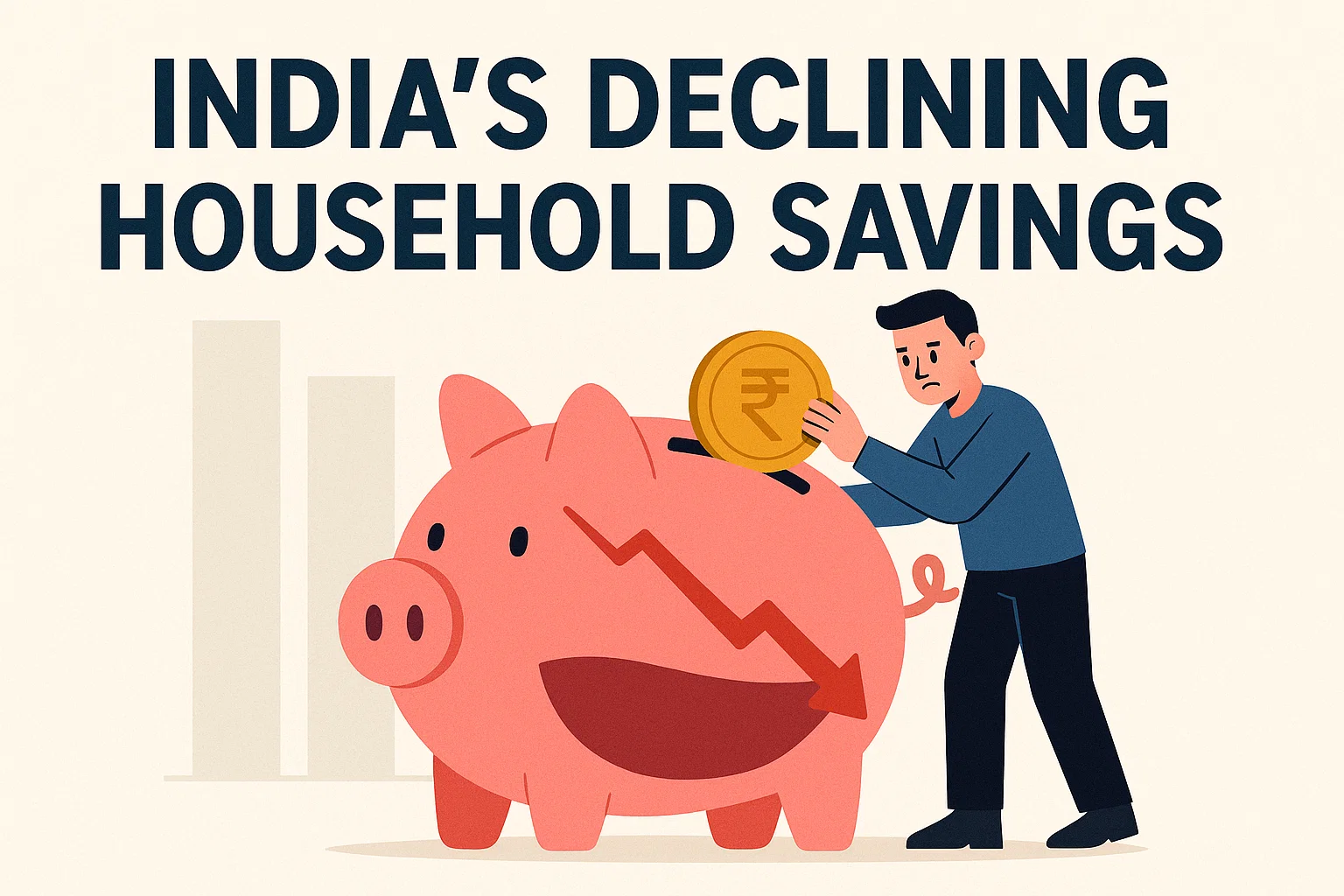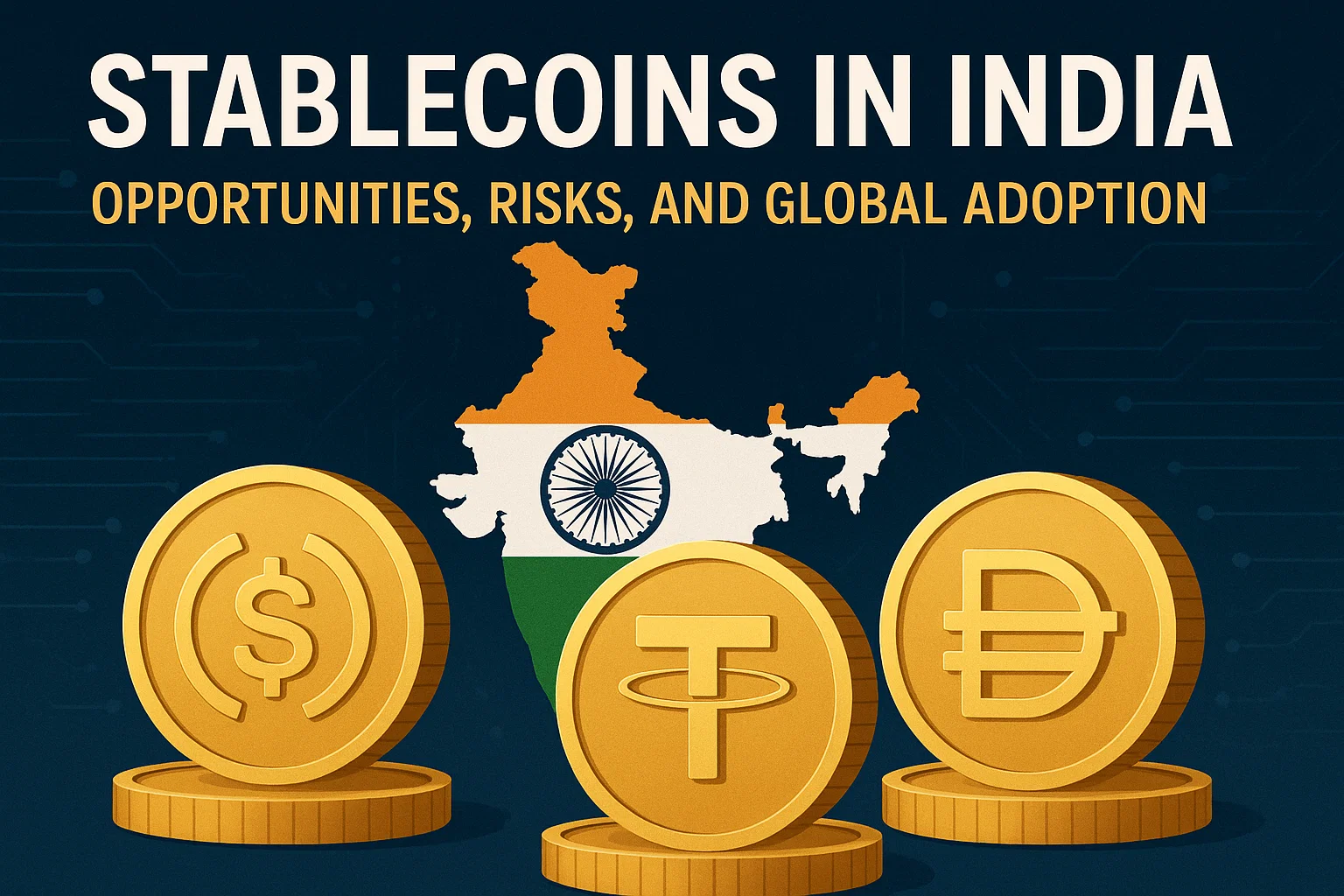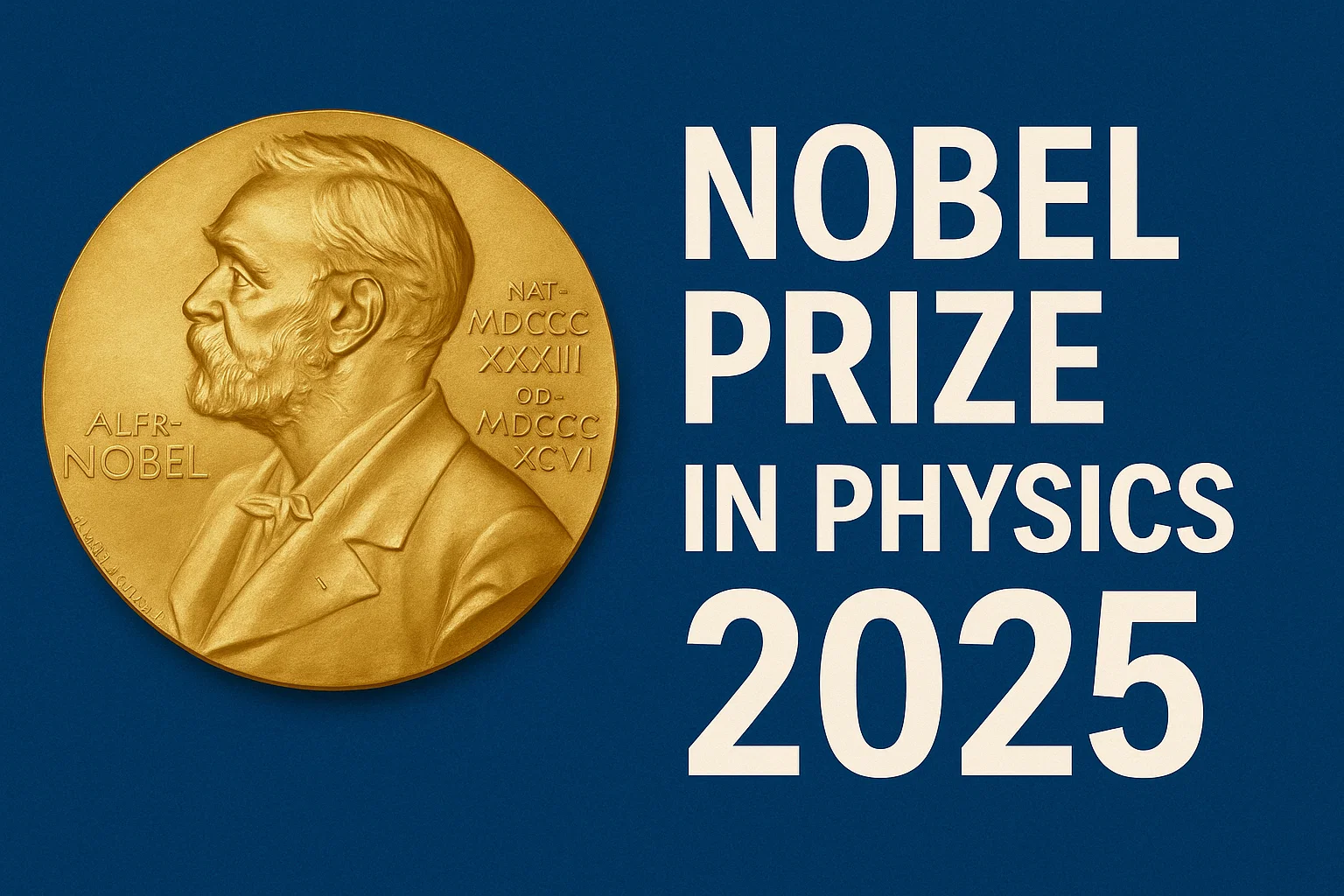Font size:
Print
India’s Poverty Debate
The truth about poverty in India
Context: In April 2025, the Government of India issued a press release titled “India’s Triumph in Combating Poverty”, citing the World Bank’s Poverty and Equity Brief which stated that 171 million Indians were lifted out of extreme poverty in the last decade.
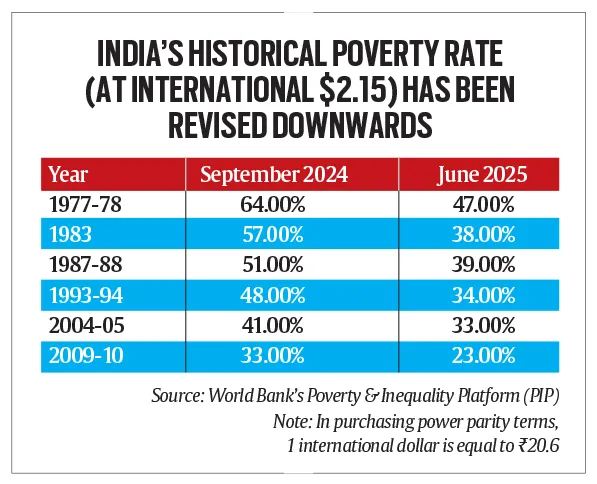
More on News
- Earlier this month, the World Bank updated its poverty line to $3 per day, estimating that just 5.75% of Indians now live in abject poverty, a significant decline from 27% in 2011–12.
What the World Bank’s Latest Data on Poverty in India Shows
- Past Poverty Was Overestimated: According to updated World Bank figures, India’s historical poverty levels were actually lower than previously estimated.
- For instance, in 1977–78, poverty was earlier estimated at 64%, but is now revised to 47%.
- Sharp Decline in Extreme Poverty Since 2011: Using the new international poverty line of $3/day, the proportion of Indians living in extreme poverty has dropped from 27% (2011–12) to 5.75% (2022–23) — a reduction of nearly 270 million people in a decade.
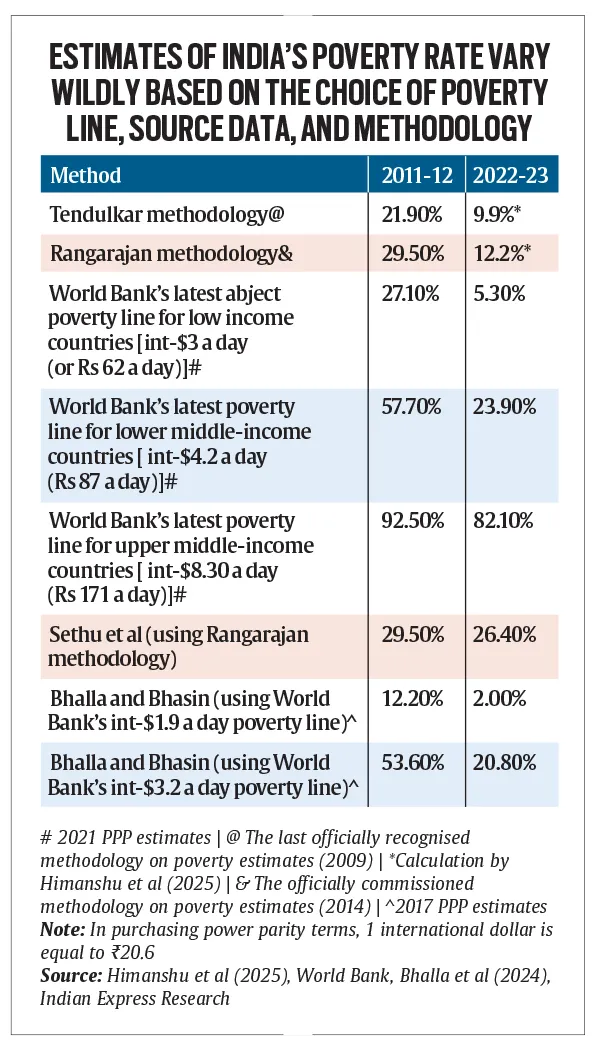
What Is the $3 Poverty Line?
- The World Bank uses Purchasing Power Parity (PPP), a method that adjusts for price differences across countries.
- The PPP rate for India in 2025 is 20.6, making the poverty threshold ₹62/day per person.
What Is a Poverty Line and Why Does It Matter?
- A poverty line is a benchmark income level that helps determine whether an individual is poor.
-
- However, poverty is context-specific — ₹1,000/month may have been adequate in 1975, but is far from sufficient today.
-
- Why Governments Use Poverty Lines:
-
- To design and evaluate welfare policies.
- To track poverty trends over time and measure the success of economic interventions.
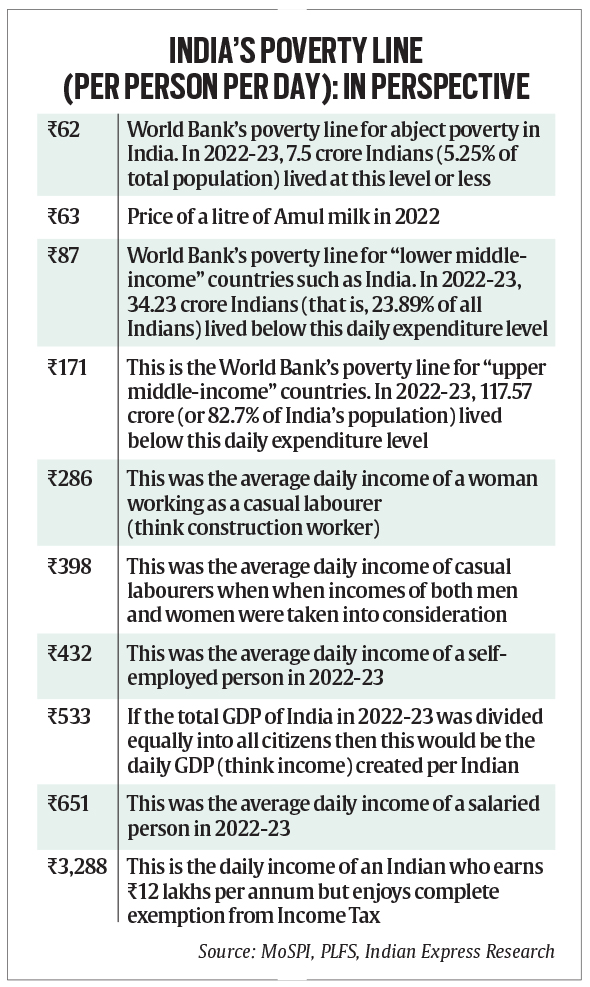
Why Does India Rely on the World Bank’s Poverty Line?
Historically, India was a global pioneer in poverty estimation, with home-grown methodologies like:
- Tendulkar Committee (2009): Set poverty lines at ₹29/day (urban) and ₹22/day (rural), later revised to ₹36 and ₹30 in 2011–12.
- Rangarajan Committee (2014): Recommended a higher poverty line of ₹47/day (urban) and ₹33/day (rural), but its report was never officially adopted.
- Since 2012, no official update has been made to India’s poverty line, pushing analysts to rely on NITI Aayog’s Multidimensional Poverty Index (MPI) or World Bank benchmarks.
How Is the World Bank Poverty Line Calculated?
-
- The World Bank’s first poverty line — $1/day in 1985 prices — was based on an average of poverty thresholds from the world’s poorest countries, adjusted using PPP exchange rates to allow global comparisons.
- As global inflation rose, the World Bank updated its thresholds:
- $1/day → $1.25 → $1.90 → $2.15
-
- In 2025: $3/day PPP-adjusted poverty line
- In India, this equates to ₹62/day per person. By comparison, the UK’s PPP rate is 0.67, and China’s is 3.45.
